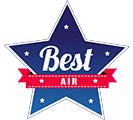
If you get frequent use out of your heater the minute temperatures drop in the Corrigan area, you’re far from alone. According to the U.S. Energy Information Administration, space heating consumed more energy than any other household consumption in 2020, the most recent year studied. This energy expenditure costs the average U.S. household around $519 on average.
Are you getting the most bang for your buck?
No matter how your energy bills stack up against this average, a few optimization tricks may help lower your costs and raise your comfort. From HVAC preventative maintenance to thermostat setting tweaks to basic cleaning, here are a few ways to enhance your system’s performance this fall and beyond.
Do a Test-Drive
The last thing you should do is wait until the temperatures drop to turn your heater on for the first time. If any lingering issues prevent your heater from running as intended, you and your household may be uncomfortable and cold while you wait for repairs!
Instead, check your heating system long before you’ll need it. Engage your heater by raising the temperature on your thermostat. You should notice the system turn on and start working to match the temperature you’ve set.
If the system doesn’t come on, or if you notice that only room temperature or cool air blows, contact an HVAC technician.
Optimize Your Settings
In the warmer months, you’ve probably had your thermostat set to high temperatures during the day, especially during periods when no one’s home.
The start of fall is a good opportunity to revisit those settings. If you and your household have adopted a new schedule this season, such as a return to school after summer vacation, reprogram your thermostat’s schedule accordingly.
For your HVAC settings in the fall, experts recommend setting your thermostat between 70 and 78 degrees, depending on the weather. You should let your indoor temperature drop no further than 64 degrees for optimal health.
Check Your Air Filter
If you’ve been running your HVAC system often in the summer, your air filter has likely taken a beating. It may have accumulated a thick layer of dust, allergens, and other indoor pollutants.
This fall, start fresh by changing out that filter! You should change your filter at least once every 30 to 60 days. Even if you don’t always make the switch, you still should check for a buildup of grime at least that often.
Opt for a thick filter with high performance ratings, especially if you have pets or if anyone in your home has a respiratory condition.
Clean Your Outdoor Unit
Heavy summer storms are common in this part of Texas, and they can wreak havoc on the outdoor unit of your HVAC system.
Mud, debris, and stray leaves can build up on the surface of your unit. Heavy rain can sometimes shift the ground beneath the system, causing it to become uneven. Dirt and debris can also clog the system’s drain line, which can lead to water backups inside your home or other issues within the system.
Even after summers with mild weather, plants and shrubbery around your unit may interfere with its performance. This subtle growth can be hard to notice, but you should make a point of cutting down any nearby tree limbs and removing plant matter from your unit each fall. This ensures that your system has the airflow it needs to heat your home.
If you notice dirt lodged inside the system itself, you may want to contact an HVAC expert. Though you can sometimes remove a system’s grills or casing to do an internal cleaning on your own, the wrong method can cause damage or even void your warranty. Consider leaving this task to a pro.
Optimize Your Airflow
One crucial part of HVAC optimization is improving your home’s airflow. This boosts your energy efficiency and ensures that your system doesn’t have to work as hard to regulate your indoor temperatures.
To do this, vacuum and clean the vents and registers throughout your home. Make sure no furniture or other objects are blocking them.
You should also check for leaky air ducts, especially in basements and crawlspaces that have little insulation. If you notice leaks, contact a professional to patch them.
Don’t forget to make sure your air stays inside your home where it belongs! Insulate your windows and doors with tools like caulk, weatherstripping, and door drafts. If you want to be thorough, consider getting a professional home energy audit to look for areas where you can improve your energy efficiency.
Get a Heating Tune-Up
Regular HVAC maintenance from a pro can keep your HVAC system at peak operating efficiency. This means you’ll consume less energy heating your home, which in turn can decrease your energy bills.
In addition, an HVAC inspection gives technicians a chance to look for wear and tear, damage, and other small issues that might snowball into major headaches if left unchecked. By catching these red flags early, your HVAC contractor can keep your system running for longer. They may even be able to lower your risk of expensive repairs in the future or increase the lifespan of your system!
In the present, expert heating tune-ups translate to better home comfort. Because your HVAC technician will help address hot or cold spots to provide more even cooling, you’ll enjoy comfortable temperatures in every room of your home.
Start Your HVAC Preventative Maintenance Today
Whether you want to save on heating costs or boost your home’s comfort, HVAC preventative maintenance can help. Setting aside time to optimize your heating system before you need it can even ensure that it’s ready to go during the first cold snap of the year! Start working through the tips above today to prepare your household.
As you start optimizing your heating system, don’t hesitate to reach out to the experienced team at Best Air and Heating for help. We service all HVAC makes and models, and we’ve been proudly serving customers throughout East Texas since 1983. Call us at (936) 213-5116 for all your heating maintenance needs!


